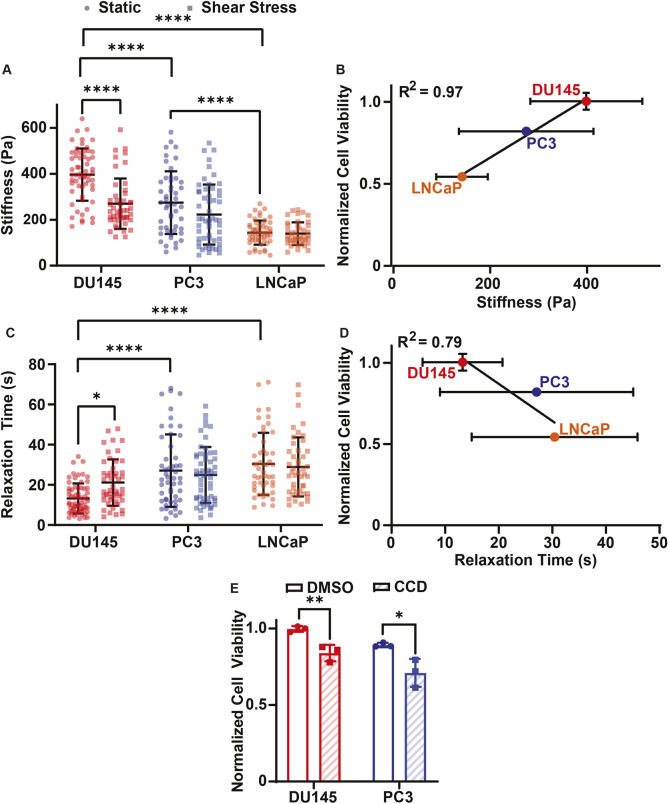Fig. 4.
Correlation of biophysical properties and prostate cancer cell viability following FSS exposure. (A) Stiffness of DU145 (static, n=58; shear, n=46), PC3 (static, n=47; shear, n=54) and LNCaP (static, n=51; shear, n=41) cells before (static) and after (shear stress) 10 pulses of FSS. (B) Correlation between normalized cell viability and cell stiffness. (C) Relaxation time of DU145 (static, n=65; shear, n=48), PC3 (static, n=46; shear, n=54) and LNCaP (static, n=52; shear, n=45) cells before and after FSS exposure, as in A. (D) Correlation between normalized cell viability and relaxation time. (E) Cell viability of DU145 and PC3 cells pretreated with DMSO or 20 µM CCD and then treated with 10 pulses of FSS. Viability of FSS-treated cells was normalized to static conditions. Data are presented as mean±s.d. Measurements from N=3 independent experiments of stiffness and relaxation time. N=3 independent experiments for normalized cell viability. *P<0.05, **P<0.01, ****P<0.001 (unpaired two-tailed t-test). Linear regression was used to calculate R2 in B and D.

